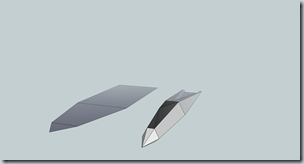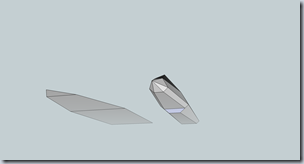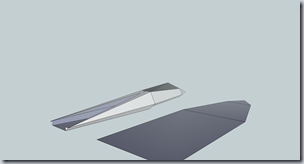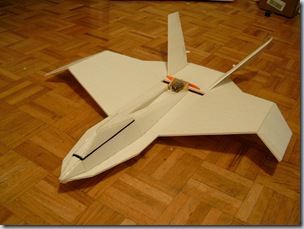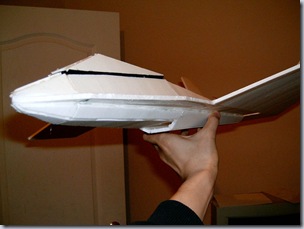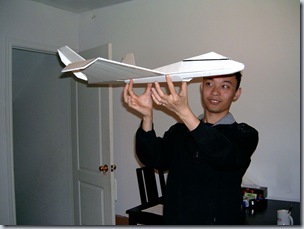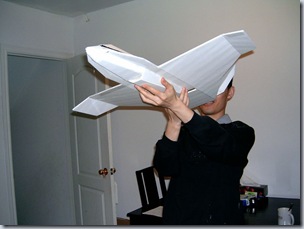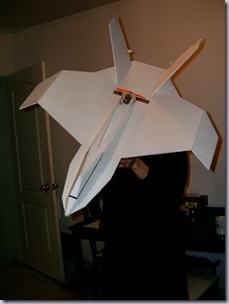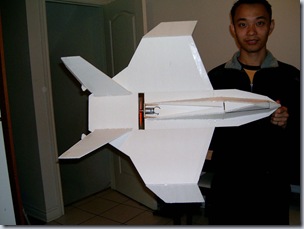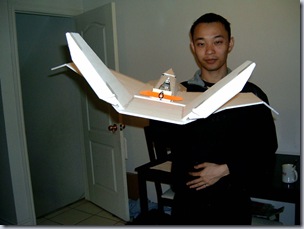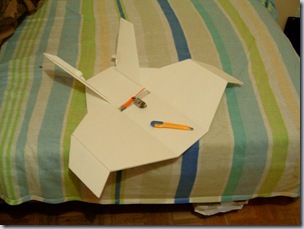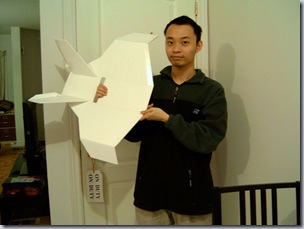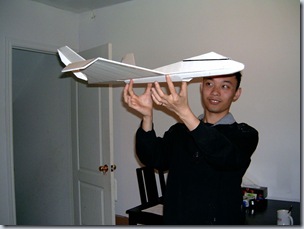
Lol I had a duh moment. The Vesaero is designed to look like a jet I should’ve clued in that that means it will also fly like a jet. First flights have shown that the Vesaero has an average cruise speed of 50 km/h. This is a tad high for a beginner with zero flight experience.
There are also some minor flight issues as well. For one the plane has a nasty habit of stalling once you get down to 10 km/h speeds. Flaps alone don’t seem to provide enough lift.
The dihedral which doesn’t look like a lot ended up being a very obvious flight characteristic the plane loves to self-right itself in flight. although this is great for the beginner I can see how more advanced pilots would struggle to keep a plane like this on knife edge. The intension however was never to build the plane for knife-edge moves so this wasn’t a bit surprise.
The position of the v-tails also puts the v-tail at risk of deep-stalling. A condition that is common to planes with controls surfaces that could be blocked by the wing during high angles of attack.
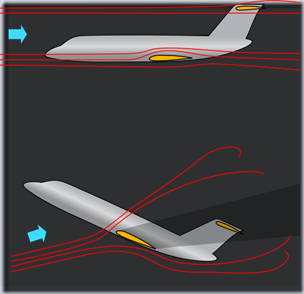
The Final design oversight has to do with super maneuverability. Saying Vesaero is agile is an understatement. Vasaero’s wing design and CG is modeled after an 3D helicopter. It’s CG balance point is located exactly where the cord of the wing is the thickest. Designing the plane this way makes the plane very easy to pitch, as well as roll.
The plane is super maneuverable in that too much pitch input from the pilot will cause the plane to “over-G” and over AoA quickly rapidly bleeding off airspeed without warning until stall is achieved. In this respect Vesaero handles very much like a Su-37 when they do the mid-air flips.
The key difference is the Su-37 and all other modern jets have a thrust to weight ratio of over 1.06:1 the best I can estimate my jet is only producing a power to weight of around 0.6:1 which puts it in line with jets of yester-year like the F-4 phantom.
All most of this means is that the plane is more capable than the pilot can currently handle so I’m putting in some modifications to make it behave more like a glider and less like a jet.
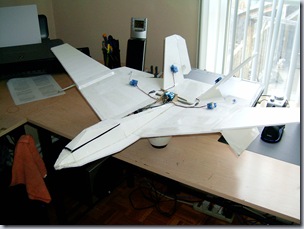
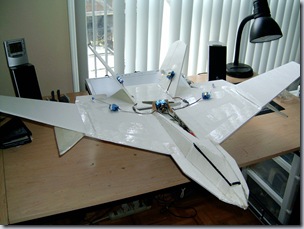
In order to slow down the jet I realized that I needed to decrease wing loading in order to increase “float”. I’ve tapped on removable wing extensions for this purpose. The wing extensions serve to double the length of the wing adding to the lifting surface. Care has been taken to maintain the proper CG even with the extension. The new body to wing ratio is now ~0.5:1 (almost double wingspan to body length).
Also after the first few test flights I noticed that just foam on the control horns was starting to wear out so these have also been improved to be much more rigid by adding plastic reinforcement members.
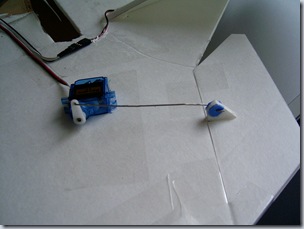
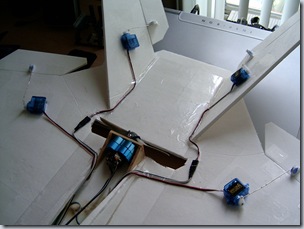
The new servo arrangement has RC helicopter like levels of rigidity and should help control the plane a lot snappier.
One minor consideration that needs to be tested in this new setup is the trainer wings add a lot of wing-span but fail to move the aileron controls out more this could lead to decreased control in roll.
In terms of damage resistance the airframe is very resistant to damages the V-tails clear the ground making hitting them during a crash near impossible. The nose cone is double reinforced and designed to deform a very severe crash had the plane drop nose first 3 stories straight into the ground the nose was easily repaired after. The modular design of the nose cone has also seen very nice crash repair characteristics. Often time only 1 or 2 panels need to be re-cut from foam for the repair but not all of them.
Overall I’m pretty happy with the design the one thing that needs to be improved is the power plant it feels somewhat underpowered to be able to call itself a jet. I also definitely need a much wider space to test it in the future as this plane likes to go fast.







